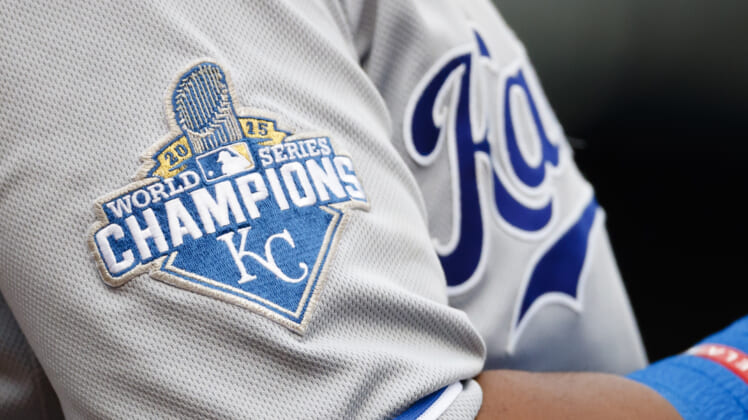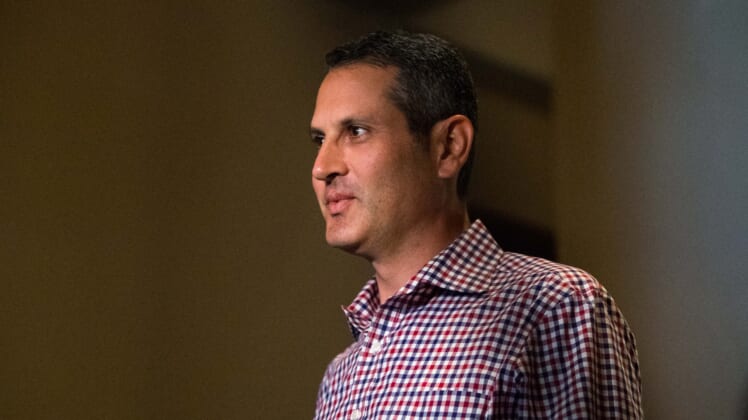The Minnesota Twins hired Derek Falvey to take over as chief baseball officer in 2016 after hitting rock bottom following a 103-loss season. A new team record. They also hired Thad Levine at the same time, to operate as the organization’s general manager.
One of the largest reasons for that team’s failures six seasons ago was a horrific pitching staff that only got 58.1 innings out of Jose Berrios. As a whole, the Twins finished dead-last in team ERA (5.08) among 15 American League teams.
Clearly it was time for an organizational shift. Ideally, one that focused on improving the pitching staff. While the Twins have reached the postseason in three of the tandem’s five seasons so far, they have yet to win a game in an elimination series, going 0-6 against playoff teams.
Despite constructing an otherwise strong pool of talent, such as displayed during the 2019 Bomba Squad, the Twins haven’t been able to do any damage outside of the regular season. Let’s review what the Falvey/Levine (Falvine) decision-making group was supposed to accomplish and how their payrolls have compared to other winning clubs.
Minnesota Twins’ budget isn’t an excuse

We can’t ignore the fact that the Twins have brought in some big names, whether it’s Nelson Cruz, Josh Donaldson, or most recently Carlos Correa. But everyone wants to know, why is the pitching staff getting ignored?
Sonny Gray, Kenta Maeda and Chris Paddack are all noticeable additions, but we haven’t seen a staff ace take the mound in the Twin Cities since Johan Santana and Francisco Liriano left town. At least not for the home team. Jose Berrios wasn’t it, and he still isn’t for Toronto, currently having allowed the most earned runs and home runs of all pitchers in 2022. Credit to the Twins for realizing this and receiving strong compensation in return, but how have they tried to immediately replace his otherwise solid production with the Twins?
They’ve added several pitching prospects, but frustrations still exist among the fanbase for not aiming higher trying to land some of the Luis Castillo’s or Frankie Montas’ of the world as of late.
I don’t want to hear about how the Twins are a small market club, so that’s why they haven’t been able to compete on a grand scale. While having hundreds of millions to spend like the New York Yankees theoretically should help, it hasn’t worked out for them lately either. Of course, a bigger budget would help, but that’s not what I’m saying is holding back the Twins either.
Look at some of the success other small-market ballclubs have experienced in recent history.
| Year | World Series Winner | Opening Day Payroll | Twins Payroll |
| 2021 | Atlanta Braves | $134 million (13th in MLB) | $121 million (16th) |
| 2020 | Los Angeles Dodgers | $105 million (2nd in MLB) | $48 million (20th) |
| 2019 | Washington Nationals | $154 million (7th in MLB) | $101 million (17th) |
| 2018 | Boston Red Sox | $235 million (1st in MLB) | $131 million (18th) |
| 2017 | Houston Astros | $124 million (18th in MLB) | $108 million (22nd) |
| 2016 | Chicago Cubs | $116 million (14th in MLB) | $108 million (18th) |
| 2015 | Kansas City Royals | $113 million (16th in MLB) | $108 million (18th) |
OK, well ironically, this one backfired. The Twins had a lower payroll than every World Series winner for the past seven seasons. But as you can also see in most years, they weren’t far off from a payroll of the eventual winners. Still, it doesn’t take a first-or-second-ranked payroll to win. Though it’s hard to argue a higher budget could help, with the right tactical approach.
Related: How a Luis Castillo trade to the Minnesota Twins could look
Falvine’s vision unfulfilled?

One of the comments Thad Levine noted after being hired was the desire to have a “strong catcher” who could help develop the team’s young arms. They had Kurt Suzuki, but he was headed for free agency. At that time players such as Matt Wieters and former Twin Wilson Ramos were also free agents, but were not seen as viable options for a losing ballclub.
“I don’t think we’ll do anything purposely to make a splash. We want to make very thoughtful decisions that are designed for the future of this organization. We’re not going to be scared to make a move, but we’re not going to make moves just to make a change.
Thad Levine
Six years later, the Twins still don’t have their “strong” catcher to help a young staff grow, but they’ve also added several veteran pitchers who shouldn’t require advanced mind behind the plate to succeed.
More importantly, I wanted to touch on Levine’s quote, where he says “We’re not going to be scared to make a move.” Longtime fans of the club may feel that’s exactly what they’ve done.
In 2019 when the Twins appeared to be one of the best clubs in baseball, finishing with the second-most wins in franchise history with 101 victories, the front office didn’t do jack about the team’s known weaknesses, which of course were pitching.
They added two veteran retreads, bringing on Sergio Romo and Sam Dyson, instead of making a splash move that could have actually helped them win a game in the ALDS.
Now I don’t want to act like everything has been bad. They did help piece together the Bomba Squad, which is still the best Twins ballclub my eyes have ever seen (was not here in 1991). And Falvine have made several underrated moves to bring in some of the stars we celebrate today, such as Jhoan Duran and Joe Ryan, by trading away local fan favorites Eduardo Escobar and Nelson Cruz.
But what about when it’s time to strike, when this team needs to swing for the fences? Is Falvine equipped to take this franchise to the next level?
Related: MLB trade rumors: Latest MLB rumors on Luis Castillo, Juan Soto
Why it’s time for the Falvey/Levine era to end
As we’ve seen all too often, the fright of trading away prospects is sometimes overblown. They’re lottery tickets that have yet to be scratched. Some win, but most lose. Hitting the jackpot doesn’t happen every day.
If a top player hits the trade market, there’s no reason the Twins shouldn’t be one of the first teams on the phone. They have a wealth of minor league prospects, including some that are near pro-ready like Spencer Steer or Matt Wallner that are sure to intrigue other ballclubs.
More importantly, this team is in a position to strike. Landing Carlos Correa should have been the go-getter. This is the time to shift gears into an all-out competitive team, but we just haven’t seen that from the front office.
Instead, they’ve been waiting for the roster to fail, behind the weaknesses of a bullpen that falls apart without Jhoan Duran taking the rubber and a starting rotation that has somehow navigated tough times while managing to stay afloat. At some point, this ship’s gonna sink. It’s only a matter of when.
A more aggressive mindset, one that understands the talent this roster has within its lineup, wouldn’t be afraid to move some pieces to strengthen the team’s weaknesses. After all, Levine said they “wouldn’t be scared to make a move.” Well, what are we waiting for? Kenta Maeda’s return from Tommy John?
Eventually acquiring a backup catcher to fill in for Ryan Jeffers while he deals with a thumb fracture shouldn’t be celebrated either. That’s just basic roster construction. The Twins should also add two arms in the bullpen, and if a legit frontline starter can be had, absolutely. One can never have enough pitching. Instead, we’ll likely hear about how getting Kenta Maeda back is like making a trade, and we’ll all act like everything’s fine.
Yet, entering the playoffs with a rotation headed by Joe Ryan, Sonny Gray, and Dylan Bundy is sure to disappoint. If there’s a bad day on the mound and the Twins are forced into their bullpen early? Sheesh. October could get ugly. That’s if they make it.
Related: 3 Minnesota Twins trade targets who could strengthen team’s playoff hopes